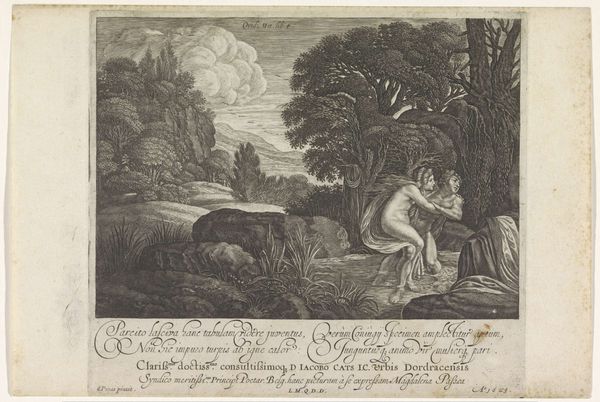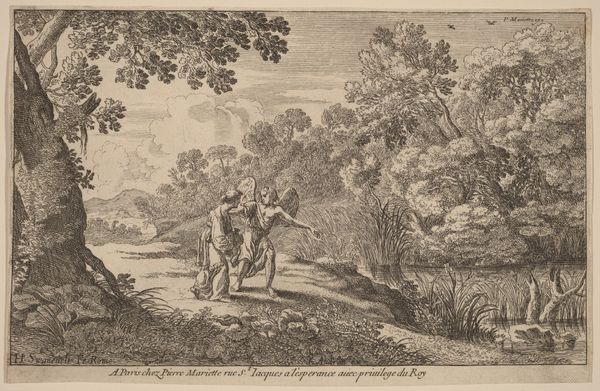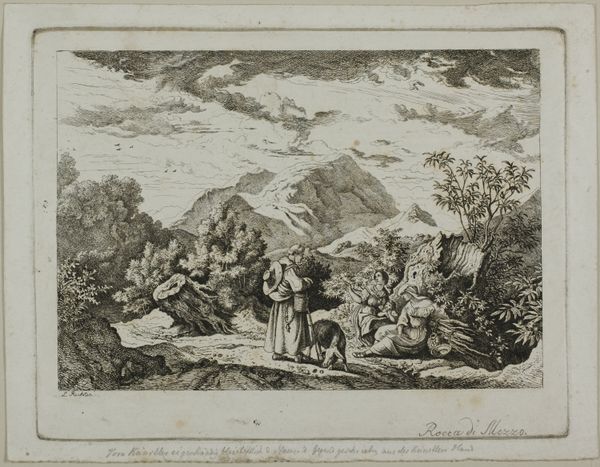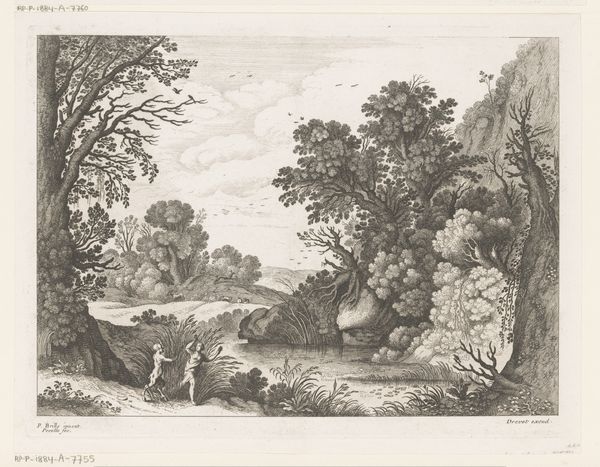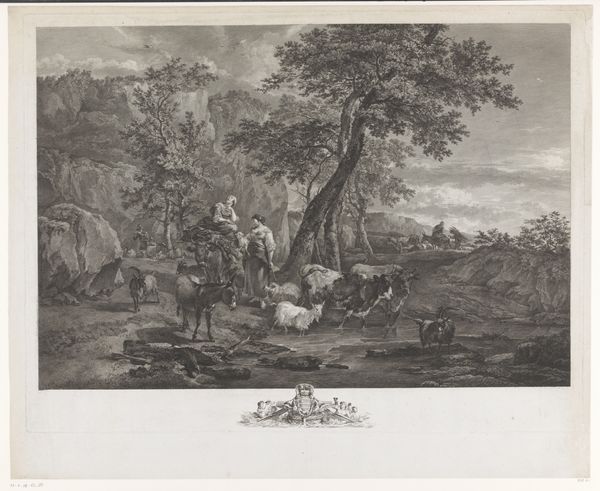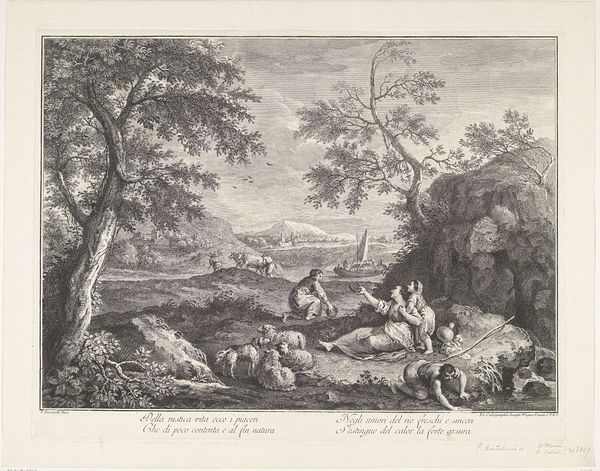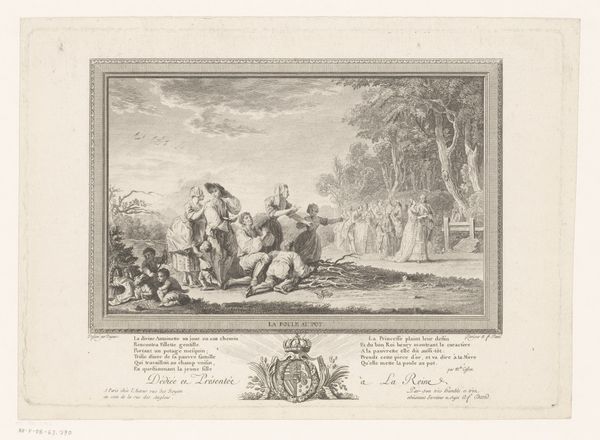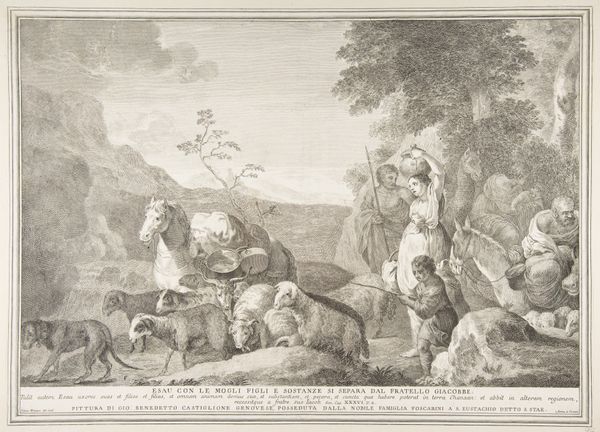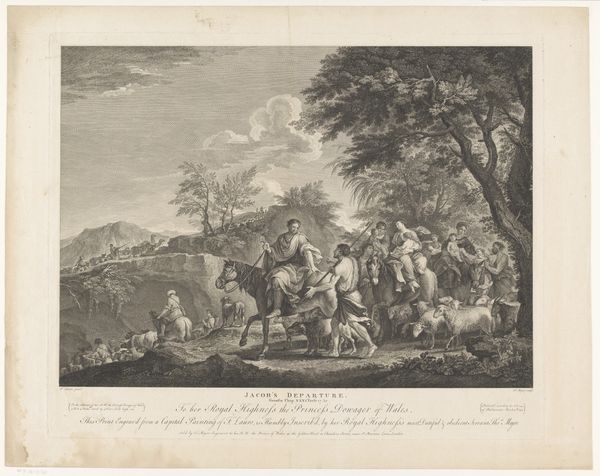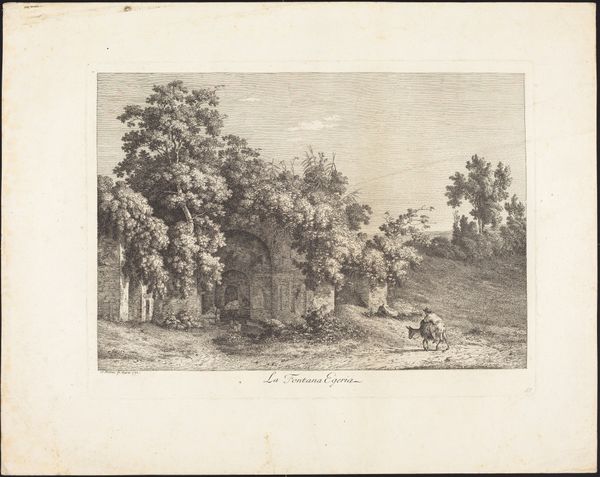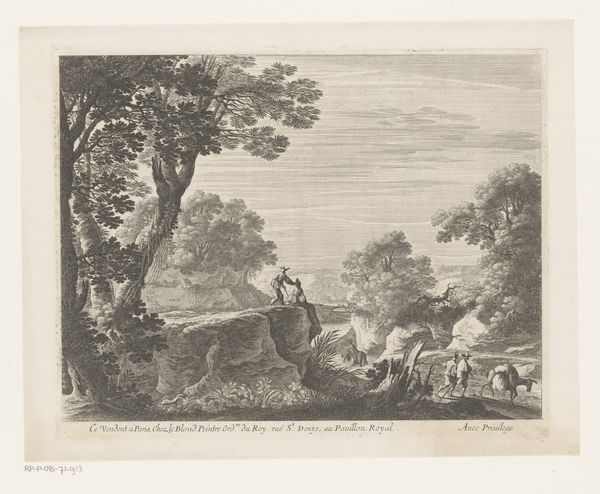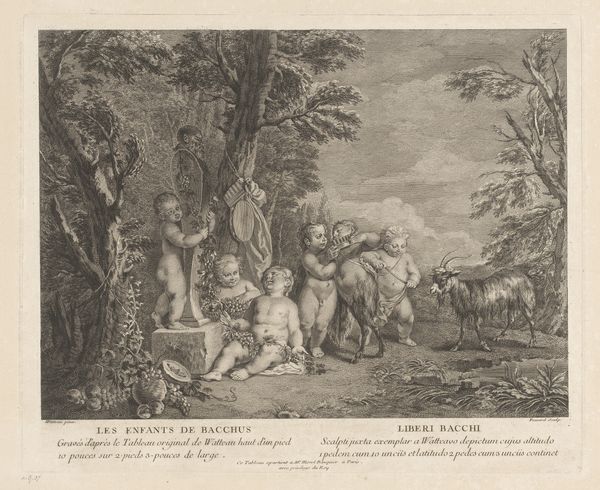
Dimensions: height 111 mm, width 172 mm, height 32 mm, width 171 mm
Copyright: Rijks Museum: Open Domain
Carl Friedrich Holtzmann created this landscape with herders and cattle using etching and engraving techniques. The material reality of this print is crucial to its meaning. Engraving involves cutting lines into a metal plate, while etching uses acid to bite lines exposed by a protective coating. These processes, requiring skilled labor and specialized tools, allow for detailed replication, democratizing art for a wider audience. The texture of the paper, the weight of the ink, and the sharp lines all contribute to the artwork's aesthetic. Holtzmann's meticulous technique embodies the era's valuing of precision and craftsmanship. Moreover, this print speaks to broader social issues of labor and consumption; the depiction of pastoral life idealizes rural labor, while the print itself becomes a commodity, reflecting the intersection of art and commerce in the 18th century. By considering the materials, the making, and its context, we move beyond traditional distinctions between fine art and craft, gaining a deeper understanding of Holtzmann's landscape.
Comments
No comments
Be the first to comment and join the conversation on the ultimate creative platform.

